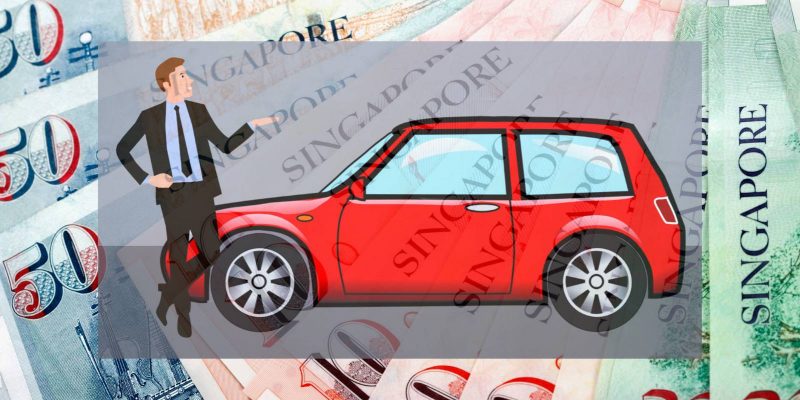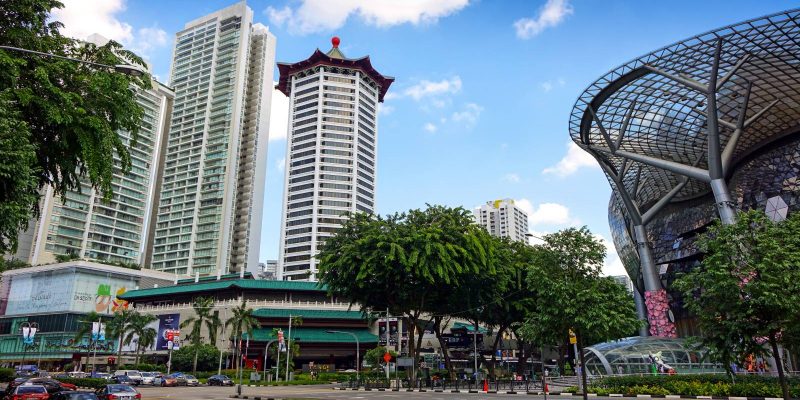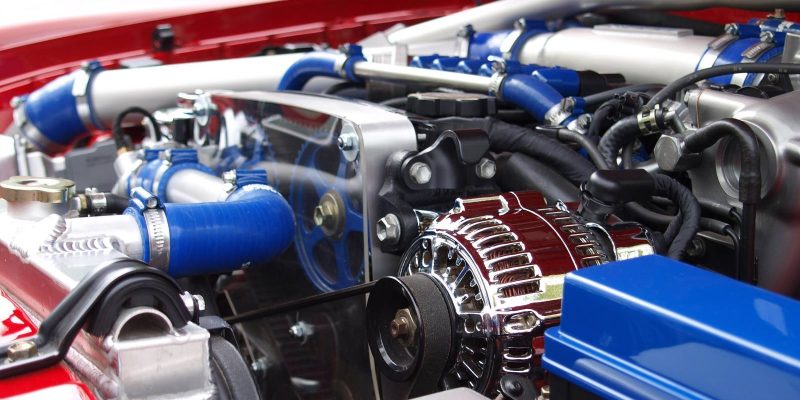According to the Worldwide Cost of Living Report 2018 by the Economist Intelligence Unit, Singapore has held the title of the most expensive city for the fifth straight year since 2014. The top factor contributing to Singapore's ranking is the cost of car ownership.
Singapore is the most expensive place in the world to buy a car (and maintain a car), thanks to its successful car control policy. When you plan to buy a car, it is important to understand the breakdown of the car price you have to pay. If you are a foreigner and hold a foreign driving license, you need to convert your foreign driving license to Singapore driving license after 12 months.
As a highly populated city-state, Singapore cannot afford a massive traffic jam. So the government invested billions of dollars each year in the public transportation system to make it affordable, reliable (decreasing in recent years), accessible and efficient.
For car ownership, the Singapore government fabricated a complicated, fair, and effective car regulation system. Since 1990, the Certificate of Entitlement (COE), complemented with tax and duties, has been introduced (and tweaked) to regulate the demand, and Electronic Road Pricing (ERP) to regulate road usage.
Today, when you pay the “purchase price” to the car dealer, less than 25% of the price is the actual car value. In simple words, for the same money you paid, you probably can buy 3-4 identical cars in the US.
So, why a car in Singapore is so expensive?
When you buy a car, you are not paying only for the car. The purchase also includes at least the following 10 items:
- COE (you can bid one for yourself, but most dealers will mark up the car price);
- Open Market Value (OMV);
- Additional Registration Fee (ARF);
- Excise duty (import duty);
- Goods and Services Tax (GST);
- Vehicular Emissions Scheme (VES)
- Car registration fee;
- In-vehicle Unit fee (IU);
- Road tax
- Sales commissions and dealer's profit
Besides, there are some optional costs. For example, you can bid on a desired car registration/plate number if you do not want to use the free one (allocated automatically).
Here is the breakdown of car costs in Singapore
1. COE (not fixed, fluctuating like the stock price)
COE is purely driven by the market: demand and supply. The minimum is $2 (Cat. A) only (it did occur once in November 2008). The maximum is the sky. Up to now, the highest COE price was $110,500 (Cat.4) in December 1994. For the new COE system (since 1999), the record was $97,889 (Cat. E) in January 2013.
With the zero growth rate, one COE is released only after one car is scrapped. Because COE only lasts 10 years, the supply is now mainly determined by the registration numbers 10 years ago.
The majority of car owners in Singapore do NOT renew the COE when the price of COE is high because the renewal price, the moving average of COE prices in the last 3 months (aka Prevailing Quota Premium), is tied to current COE prices, not the old COE price. Also, if you renew your COE for another 5 or 10 years, you will lose the PARF (read on) and pay additional/higher road tax each year.
Although you can bid COE by yourself with a $10,000 deposit, most Singapore car buyers have to authorize the car dealers to bid for them. Most authorized dealers (AD) “bundle” COE with the car in the price list. If you want to bid the COE for yourself, they will deduct an amount that is far lower than the current COE price for the list price. Only a few small parallel importers (PI) may be flexible. But some small PIs maybe are not so reliable.
Off-Peak Car (OPC) buyers can get a rebate of up to $17000 based on the Prevailing Quota Premium (PQP). Of course, you need to understand the limitations of the OPC and the new Revised Off-Peak Car (ROPC) schemes.
You may check this guide on how COE works and how COE price fluctuates.
2. OMV (the real value of the car, depending on the car)
Open Market Value (OMV) is declared by the importer and evaluated by Singapore Customs.
Normally, OMV includes car purchase price, freight, insurance, and all other charges incidental to the sale and delivery of the car to Singapore. So, OMV essentially is the real “value” of your car.
Several components of your car price are tied to the OMV.
Car dealers may play lightly with the OMV. They may choose to fit some components (e.g., leather seats, tires, parking cameras) locally to lower the OMV to make the car price competitive.
3. ARF (tied to OMV, partially refundable if you scrap your car within 10 years)
Additional Registration Fee (ARF) is a tax for car registration. In Singapore, ARF is a percentage of the OMV. A higher percentage will be imposed for higher OMVs, similar to income tax calculation in many countries.
Currently, ARF is calculated in 3 parts based on OMV:
- For the first $20,000, 100% of the OMV
- For the next $30,000, 140% of (OMV-20000)
- Above $50,000, 180% of the (OMV-50000)
The total ARF payable to the government is the sum of these 3 parts:
- If OMV is not higher than $20,000, the ARF will equal the OMV.
- If OMV is higher than $20,000 but lower than $50,000, the ARF will be $20,000+1.4*(OMV-20000).
- If OMV is higher than $50,000, the ARF will be $62,000+1.8*(OMV-50000).
Up to 75% of the ARF is refundable as the Preferential Additional Registration Fee (PARF) Rebates.
PARF rebates calculation is based on net ARF. If your car enjoys the VES rebate (read on), the net ARF will be the reminder after the deduction of the rebate.
If the car is deregistered within 5 years, you can get back 75% of the ARF. The percentage decreases after 5 years. If you deregister the car until COE expires, the PARF rebate will be 50% of the ARF. Please note the car must be less than 10 years old to get the PARF rebates upon deregistration.
As mentioned earlier, if you renew the COE for your car, you will be automatically de-qualified for PARF rebates.
4. Excise duty (20% of OMV)
ARF is a tax, and excise duty is a kind of import duty.
Currently, the exercise duty for all cars imported to Singapore is 20% of the OMV.
5. GST (7% of OMV+ excise duty)
Goods and Services Tax (GST) in Singapore currently is 7% of the taxed value.
For cars, GST is collected on the OMV and exercise duty.
So, for the GST, the dealer has to collect is 7%*(OMV+20%OMV). This equals 8.4% of the OMV.
6.VES rebate or surcharge
Vehicular Emissions Scheme (VES), which replaces the old Carbon Emissions-Based Vehicle Scheme (CEVS), was implemented in January 2018.
Current VES is based on a vehicle’s carbon dioxide (CO2) emission and the emissions of 4 pollutants – hydrocarbons (HC), carbon monoxide (CO), nitrogen oxides (NOx), and particulate matter (PM).
Some “clean” or “green” cars will get up to $20,000 (band A1) VES rebate to offset ARF (subject to a minimum ARF of $5000) or get up to a $20,000 surcharge (band C2). Unlike the rebate, the VES surcharge does NOT change your net ARF. This means you cannot get any of the surcharges back upon deregistration.
7. Car registration fee ($220)
Currently, LTA charges a $200 car registration fee, including a system-assigned car registration/plate number.
8. In-vehicle Unit fee (IU, $150)
All cars registered in Singapore must fit the In-vehicle Unit (IU). The IU is required for ERP payment. Many car parks also need this IU to calculate parking fees.
The unit must be fitted before the car can be registered.
The cost of the IU unit is $150 plus 7% GST. Almost all car dealers include the IU unit in the price list.
9. 6-month (or 12-month) Road tax (tied to the car engine capacity and fuel type)
Upon registration, a 6-month or 12-month road tax must be paid. Almost all car dealers in Singapore include 6-month road tax in the price list already.
Please note, when paying road tax, you must have a car insurance policy covering this period for the car. This means you need to pay the insurance company before car registration. For legal reasons, most car dealers only collect payments from the insurance company when you make payments for the car.
You have the legal right to use any insurance company. It is not necessary to use the “recommended” or in-house insurance company. But most car dealers may claim the price list includes insurance subsidy, and therefore, you may have to pay more for the car if you do not use the “subsidized” insurance company.
10. Sales commissions and dealer's profit (usually at least 15% of the purchase price)
All car dealers do business for profit. The salesperson needs to get paid for their hard work, although you may not satisfy with them.
Do you know the breakdown of the cost of new cars? Can you understand why cars are so expensive in Singapore now?
If you have any questions about car prices in Singapore, please let us know in the comment box below.
The community will help you.
For questions on buying a car in Singapore, please check Singapore car ownership guides page.
For questions on driving a car in Singapore, please check Singapore driving guides page.
For maintaining and servicing your car in Singapore, please check Singapore car maintenance guides page.
For driving from Singapore to Malaysia, please check Dring to Malaysia guides page.
You can also reach us through:
Safe driving! Happy driving!





Leave a Reply